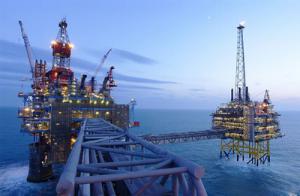EnergyStudying the impact of removing brine from under- sea carbon dioxide stores
The Birmingham, U.K.-based Energy Technologies Institute (ETI) is seeking partners for a project to study the impact of removing brine from under-sea stores that could be used to store captured carbon. A previous ETI project in its Carbon Capture and Storage (CCS) technology program led to the development of the U.K. principal storage screening database, CO2Stored, which made a number of assumptions to estimate capacity and injectivity for each of the 550 stores off the U.K. coast. One of these was that brine can potentially be removed through a purpose built well or wells from the store to depressurize it, and can still retain the operation and integrity of the store.

Concept of suboceannic carbon sequestration // Source: stanford.edu
The Birmingham, U.K.-based Energy Technologies Institute (ETI) is seeking partners for a project to study the impact of removing brine from under-sea stores that could be used to store captured carbon.
A previous ETI project in its Carbon Capture and Storage (CCS) technology program led to the development of the U.K. principal storage screening database, CO2Stored, which made a number of assumptions to estimate capacity and injectivity for each of the 550 stores off the U.K. coast.
One of these was that brine was not produced from the reservoir before, during or after CO2 injection. If a reservoir is pressurizing as a result of CO2 injection, brine can potentially be removed through a purpose built well or wells from the store to depressurize it, and can still retain the operation and integrity of the store.
The brine could potentially be sent to another aquifer or disposed of in the sea. Brine production is a recognized way of controlling the reservoir pressure and potentially its flow, and its use is a contingency in several store designs.
ETI reports that recent work published by Heriot Watt University showed that producing brine in the United Kingdom Continental Shelf (UKCS) may be beneficial to injection rates and storage.
This project will produce a cost-benefit analysis of brine production, using the CO2Stored database and models developed in the ETI’s U.K. Storage Appraisal Project as a starting point. Analysis will cover both saline aquifers and oil gas reservoirs.
The first stage of the project will examine any changes in injectivity and storage capacity as a result of producing brine, the additional cost of the brine wells, and the savings, if any. If the first stage shows there are potential benefits, these will then be refined and the operational implications examined.
Paul Winstanley, ETI CCS project manager said: “The ETI’s analysis of the UK energy system highlights the importance of CCS to an affordable, secure and sustainable low carbon energy system.
“This project will build on our earlier work and help to build the evidence base, increase knowledge and understanding about the stores we have identified and build confidence among potential operators and investors.”
ETI notes that the request for proposals will close on 24 September 2015. The deadline for notification of intention to submit a proposal is 10 September 2015.
The ETI’s recently published insights document Building the U.K. Carbon Capture and Storage Sector by 2030 — Scenarios and Actions identified the practical steps needed over the period to 2030 to build an effective CCS sector.
It suggested three possible scenarios that would allow CCS to realize its long term potential and play a key role in decarbonizing the U.K. energy sector with the development of around 10 GW of capacity by 2030.
— Read more in Building the U.K. Carbon Capture and Storage Sector by 2030 — Scenarios and Actions (Energy Technologies Institute, 2015)
